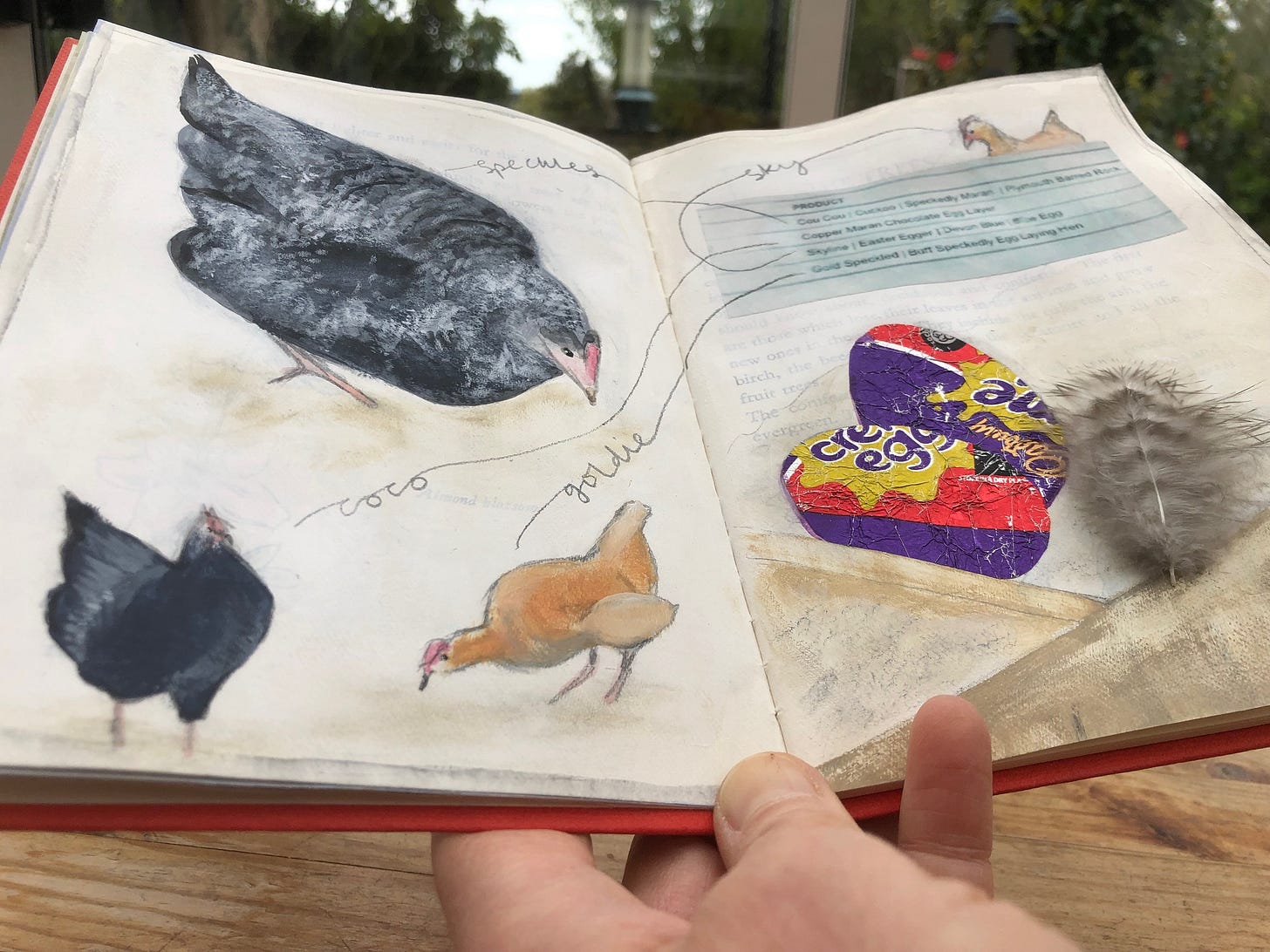
Dear Reader,
When I was growing up our family was a tight-knit unit: we four made up the chambers of a beating family heart. We still do. Back then, though, finding friends to play with was a trickier affair.
Although we had plenty of friends as children – I went to a church playgroup in the next village, then school, Brownies, and later, Girl Guides – our house wasn’t in the sort of location where children would pop round to neighbours’ homes to play. Anyway, none of the other houses located on our busy main road contained families with children.
I had hens as friends.
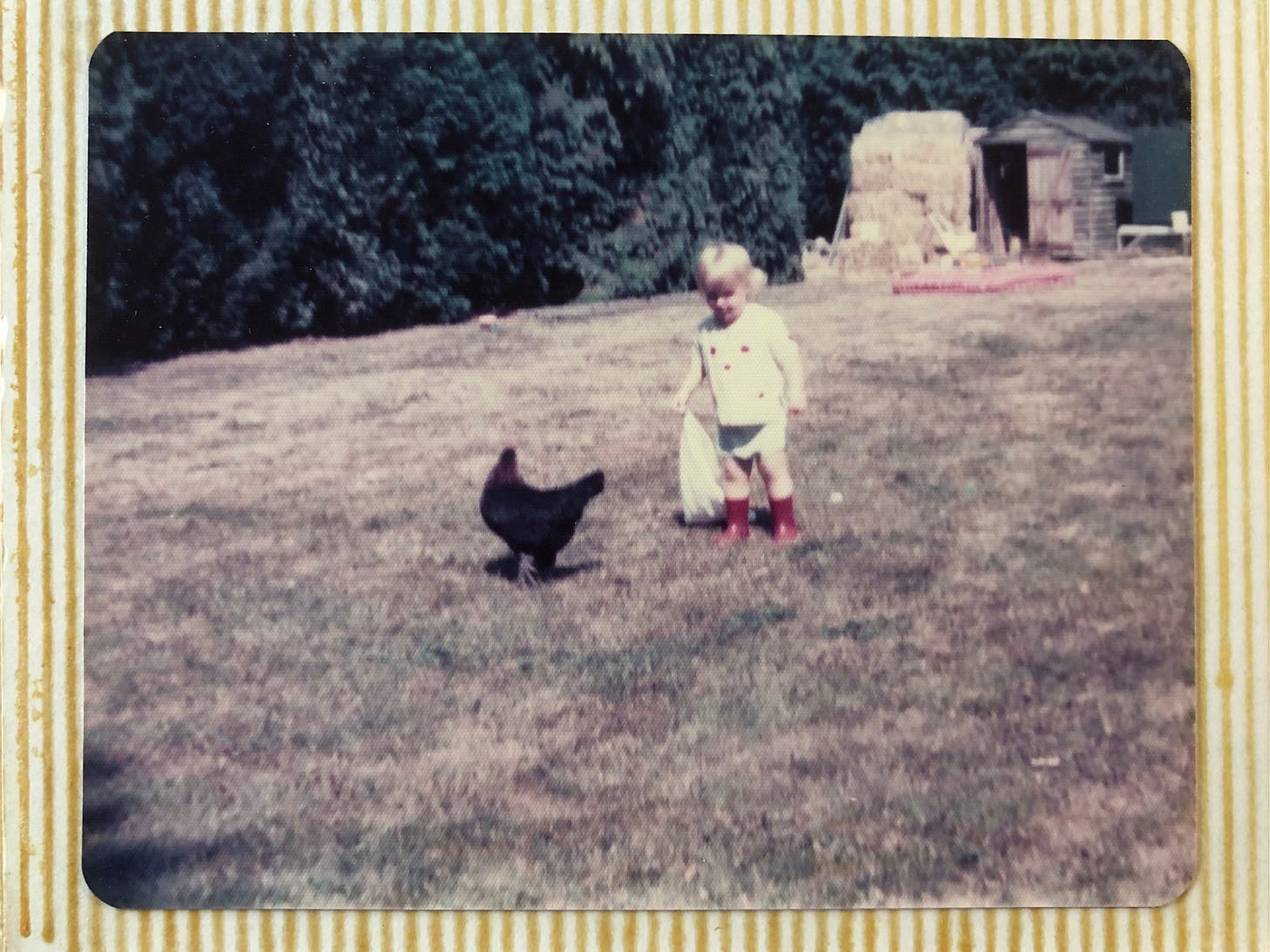
We were lucky to have a large garden, most of which was given over to two paddocks. When we moved there in 1976 our hens and our donkey came too, and over the years the population of our menagerie grew to include geese, sheep, goats, bees, pigs and ducks.
Hens were a mainstay. At first we kept bantams – gorgeous, tiny little characters – the poultry equivalent of the ‘teacup’ piglet. They were flighty as anything, and if Dad didn’t keep on top of clipping their wings they wouldn’t think twice about flying over fences and hedges and roosting as high as their courage allowed.
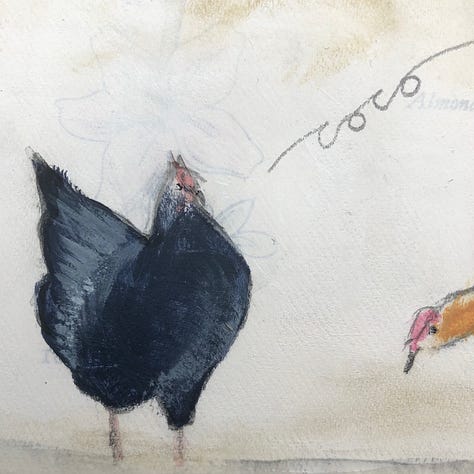
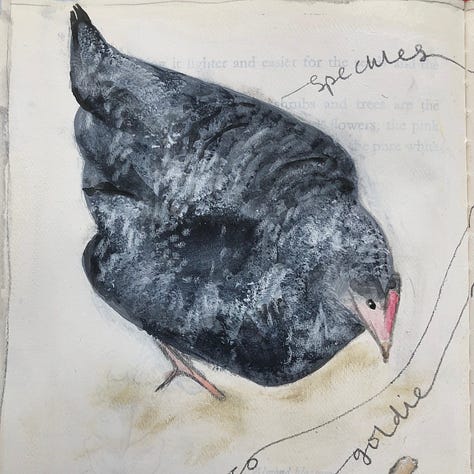

Cockerel Charlie Brown and his happy harem of hens took the term ‘free range’ to another level, and the girls – a multitude of Mrs Browns – had a passion for motherhood, becoming broody at the drop of a hat. With alarming regularity one or more hens would be noticed as missing in action, and we’d all be sent off round the garden to find their secret nesting places: Mrs Hedge Brown would be found underneath the dark line of cupressus; Mrs Goat House Brown in the goat house. If we weren’t in the market for any additions to our poultry family at the time, we would carefully remove the eggs to persuade the broody mother to reconsider her procreational plans, often then finding Charlie Brown already doing the rounds of his territory to find some other tucked-away location for his lady of the moment to nest in.
My favourite job was to collect the eggs from the hen house every morning; in fact, my favourite place was the hen house. If ever I couldn’t be found, that would be the first place my parents would look, because that’s where I’d head for to hide whenever I was cross or upset.
I had a little basket for collecting the eggs: it didn’t need to be any bigger, because bantams’ eggs are tiny. Still, there was a rule: to carry no more than ten eggs in my basket.
One morning there were eleven eggs in the hen house nestboxes. I popped the extra one into the basket – it fitted okay, but as I walked back from the hen house it made a break for freedom, rolling off its precarious perch at the very top of the basket to be messily claimed by gravity. 😕
Although we collected the eggs every day, my brother and I would always find a foil-wrapped chocolate one each in the nestbox every Easter Sunday morning. This happened every year without fail: it was magical.
From 1985 – and for years after that – the slogan for Cadbury’s creme eggs was ‘How do you eat yours?’ In this short Huffpost article by Louise McCready Hart, I learned the following:
The official Cadbury website offers two methods: “egg and soldiers” and “bite and lick”. If you prefer egg and soldiers, you eat (it) like a soft-boiled egg by placing it in an egg cup and eating the fondant filling with a spoon or scooping it out with Cadbury Fingers. “Bite and lick”… describes the method of biting the top and sucking out the cream.
From the same article:
According to a Cadbury survey:
53% of people bite off the top, lick out the cream, then eat the chocolate
20% just bite straight through
6% use their finger to scoop out the cream
But Reader, there are other ways.
Those who are parents of very small children for whom a creme egg is only an annual treat and who therefore might not be used to the sheer level of messiness associated exclusively to that product1 might be interested in my family’s solution to the infusion of sticky goo pervading every Easter Sunday: creme eggs are to be eaten only in the bath.
When I was little, this inspired idea not only solved the chocolate and fondant stickiness problem: it also provided a delightful enhancement to the creme egg eating experience. Let’s call it the ‘melt factor’.
That’s right: when a creme egg is enjoyed in the bath, its chocolate shell – once relieved of its fondant filling by means of tongue or finger – can be filled with water from the hot bath tap and smooshed into the mouth as soft, molten chocolate.
I’m not sure that the Cadbury marketing team had considered this bath-specific ‘melt factor’ when they dreamed up ‘How do you eat yours?’ back in 1985, but for my brother and me this was the absolute pinnacle of creme egg-eating style.
On an unseasonably hot Easter Sunday in April 2019 we visited my sister-in-law’s family for an egg hunt. Interrupting the proceedings to join one of the boys to walk the dog, we found ourselves on a public footpath that crossed one of the fields of stock at the local free-range chicken farm.
The hens weren’t much bothered by the dog, who was on a lead and knew how to behave, and I was struck by how very friendly the birds were. That quick dog walk squeezed between two of the complicated clues in the family Easter-egg hunt took over an hour thanks to this:
And this:
We eventually arrived back in the family’s garden to cries of ‘THERE you are!’ and an explanation by the nephew in charge of the dog that ‘Rebecca had to talk to every chicken’.
Ten minutes later the final Easter egg was found in its unfortunate hiding place within a hollow steel garden ornament in full sun, where it had been for quite some time. It looked very sorry for itself, as did Jim’s youngest nephew. 😳
Hens enjoy the company of their own kind, but are equally happy hanging around with other animals in a mixed menagerie, including people. They’re great to converse with: they’re so interested in interacting with people that every noise they make sounds like a question.
Having lost the last of his previous generation of ‘girls’ to old age towards the end of the winter, with spring on the horizon Dad was in the market to make some new hen friends.
He ordered four point-of-lay chickens from a local free-range farm, each of them a different breed – the idea being that every hen would lay a different-coloured egg.
He collected the new batch at the beginning of this month, and lifted them carefully out of their box into the hen run, where they made short work of exploring their new surroundings. They located their feed hopper, drinker and stash of crushed oyster shell, and quickly found the bale of straw to peck that Dad had put in to keep them occupied.
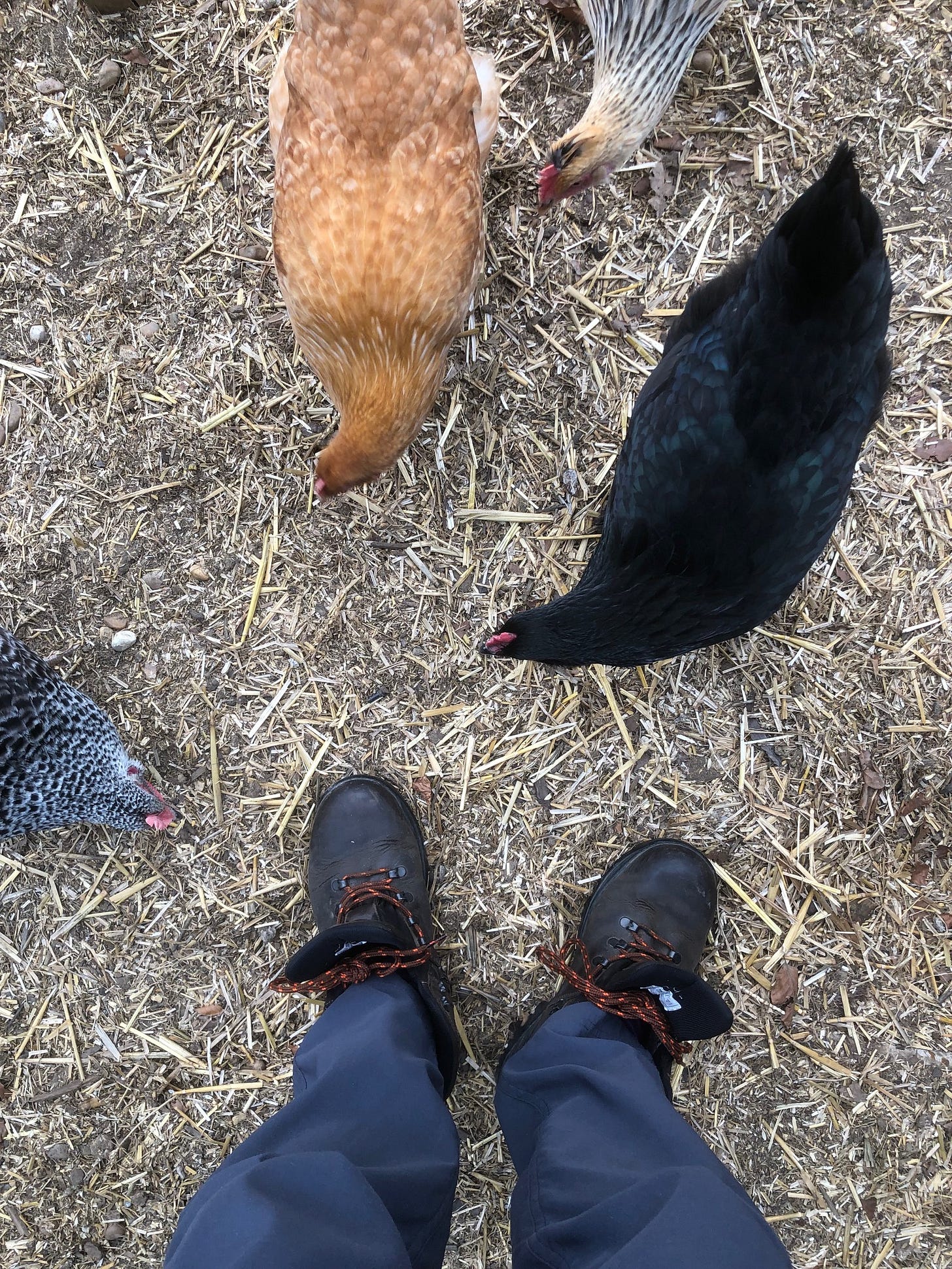
A week later, Jim still hadn’t met the hens, so on Easter Sunday we popped over to my parents’ house to exchange festive greetings and to introduce Jim to the girls.
My parents were certain to be down at the end of the garden: it was a beautiful day at the height of spring planting season. ‘See if you can find Mum and Dad’, I told Jim, as I headed towards the hen house. ‘I’ll catch you up!’ 👀
Suspicious pause
‘How are the girls?’ I asked Dad a little later, as we finished our coffee sitting by the pond.
‘Fine, I think. No eggs yet, but they’re settling in well. I’ve repositioned their nestbox in the hope that they’ll start using it soon.’
Ready for the great introduction, we all set off towards the hen house.
‘Jim, meet the girls. Girls, this is Jim!’
While his hens and his son-in-law got to know each other, Dad was checking out the nestbox. A loud guffaw made us all jump.
‘BRILLIANT!’
‘What, is there an egg?’ asked Mum.
‘There are TWO!’ said Dad, delighted. ‘One each!’
Three weeks after the hens had moved in, Mum sent me this picture on iMessage:
The shell of this very first egg was soft, and although it was broken in two places, its inner membrane was still intact. ‘This is going straight into a quiche!’ read the text.
Reader, this is how fresh it was:
Not like a three-week-old supermarket egg that’s gone watery, this one was domed and viscous, its white a defined oval richly enveloping the beautiful golden yolk.
The four new girls – Coco, Sky, Goldie and Speckles – are already earning their keep, each now indeed laying their own individually-recognisable eggs. But that’s not their only job. This new generation of hens has become its own part of our beating heart: in a family that still considers hens as friends.
Love,
Rebecca
If you’ve enjoyed reading this post, the third in a regular series exploring some of my past treasures in words and pictures, please let me know by clicking the heart. Thank you! You’ll find all the posts in this ‘Art & Treasures’ series here.
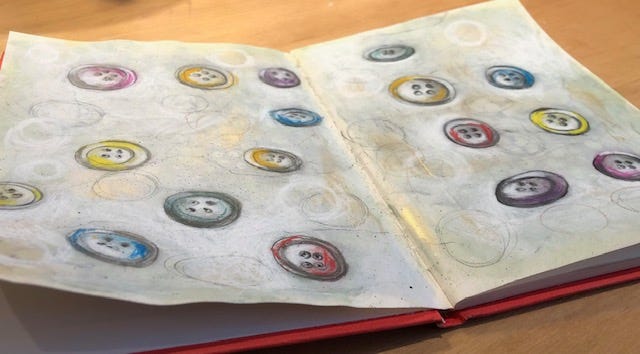
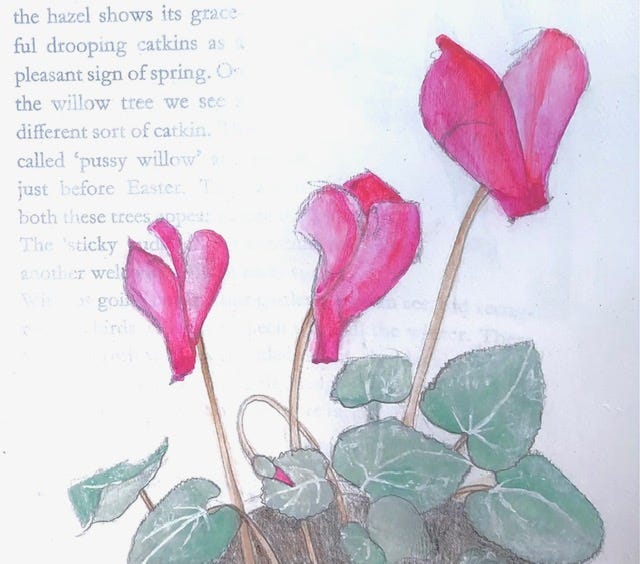
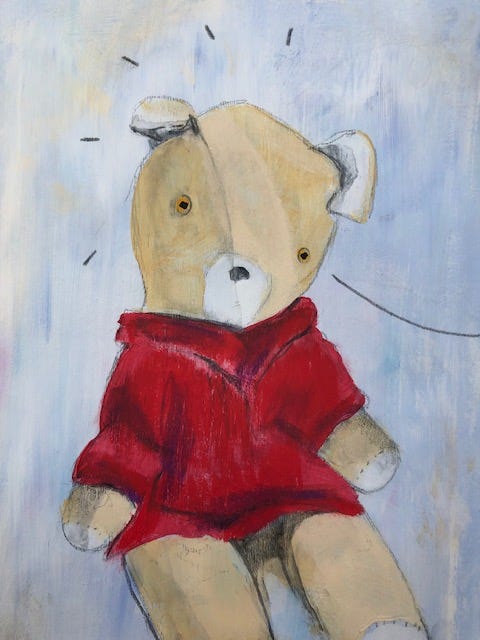
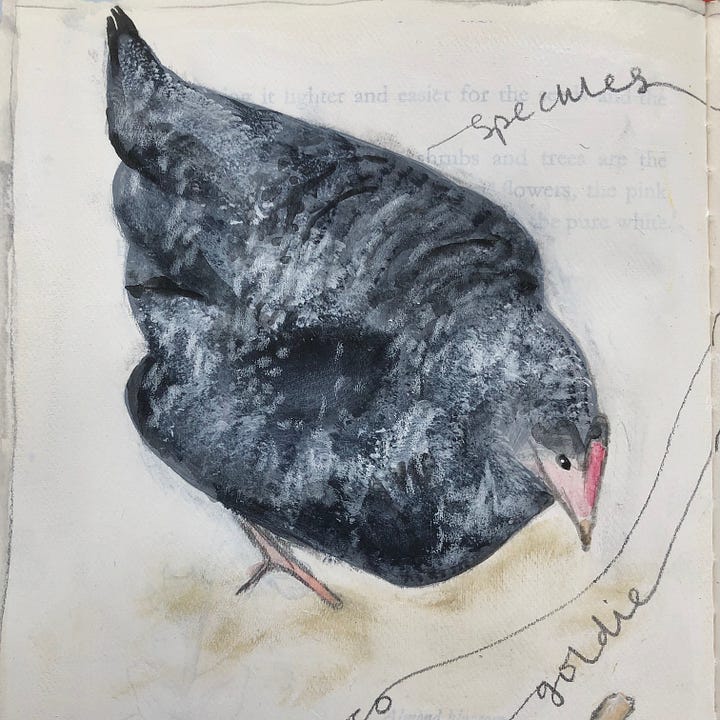
If you’ve been following my correspondence with my fellow Substacker Terry Freedman you’ll know that it’s my turn to reply to him on Wednesday! You can find his latest letter to me here, and links to our entire canon of letters here. Do have a read of our light-hearted exchanges about British life over our shoulders!
My next ‘Dear Reader, I’m lost’ post will of course be published next Saturday.
Thank you for reading! If you enjoy ‘Dear Reader, I’m lost’, please share and subscribe for free.
Context: My parents. Our family Easter Sunday. Our sticky bathroom, circa 1976 to 1986.




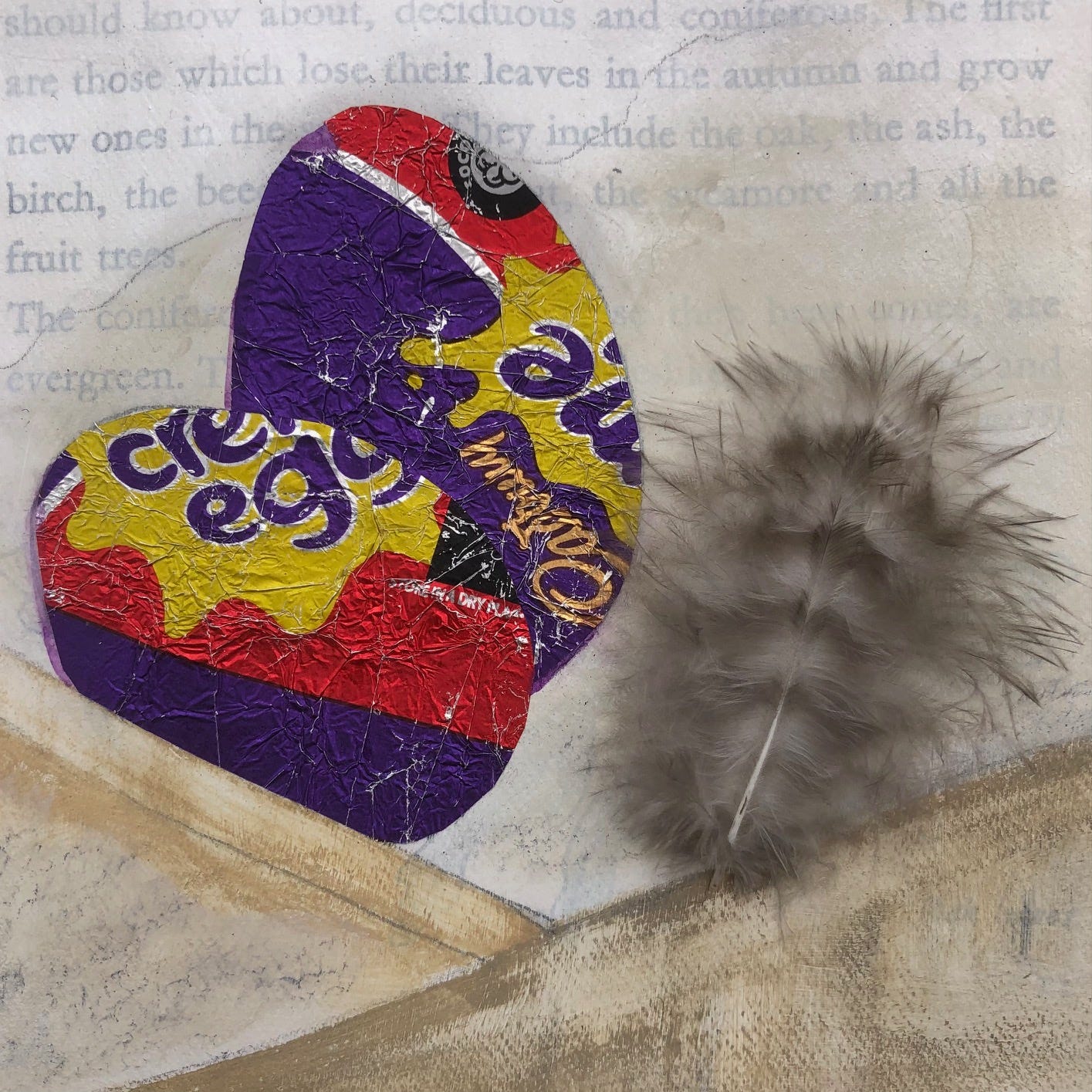

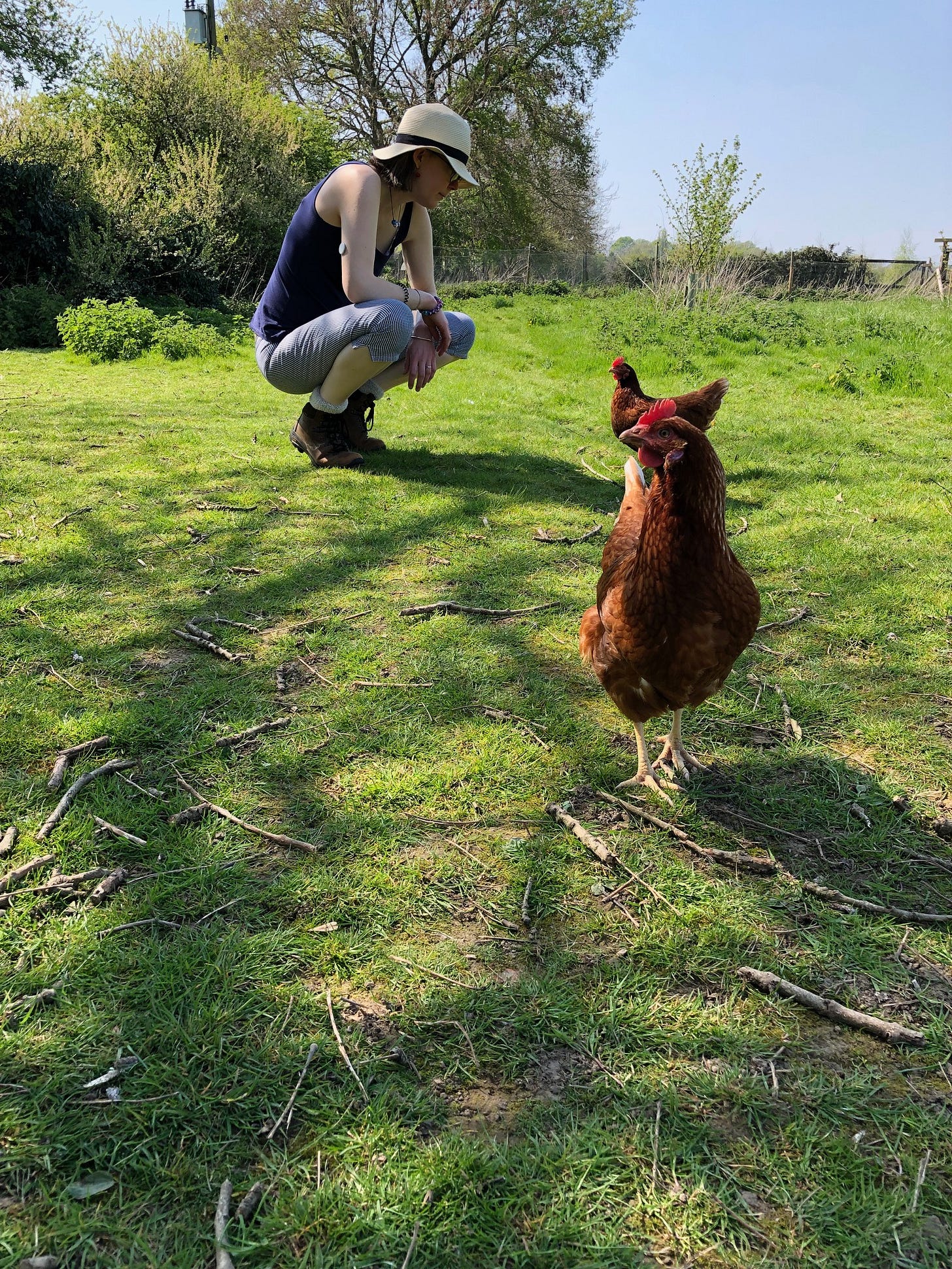


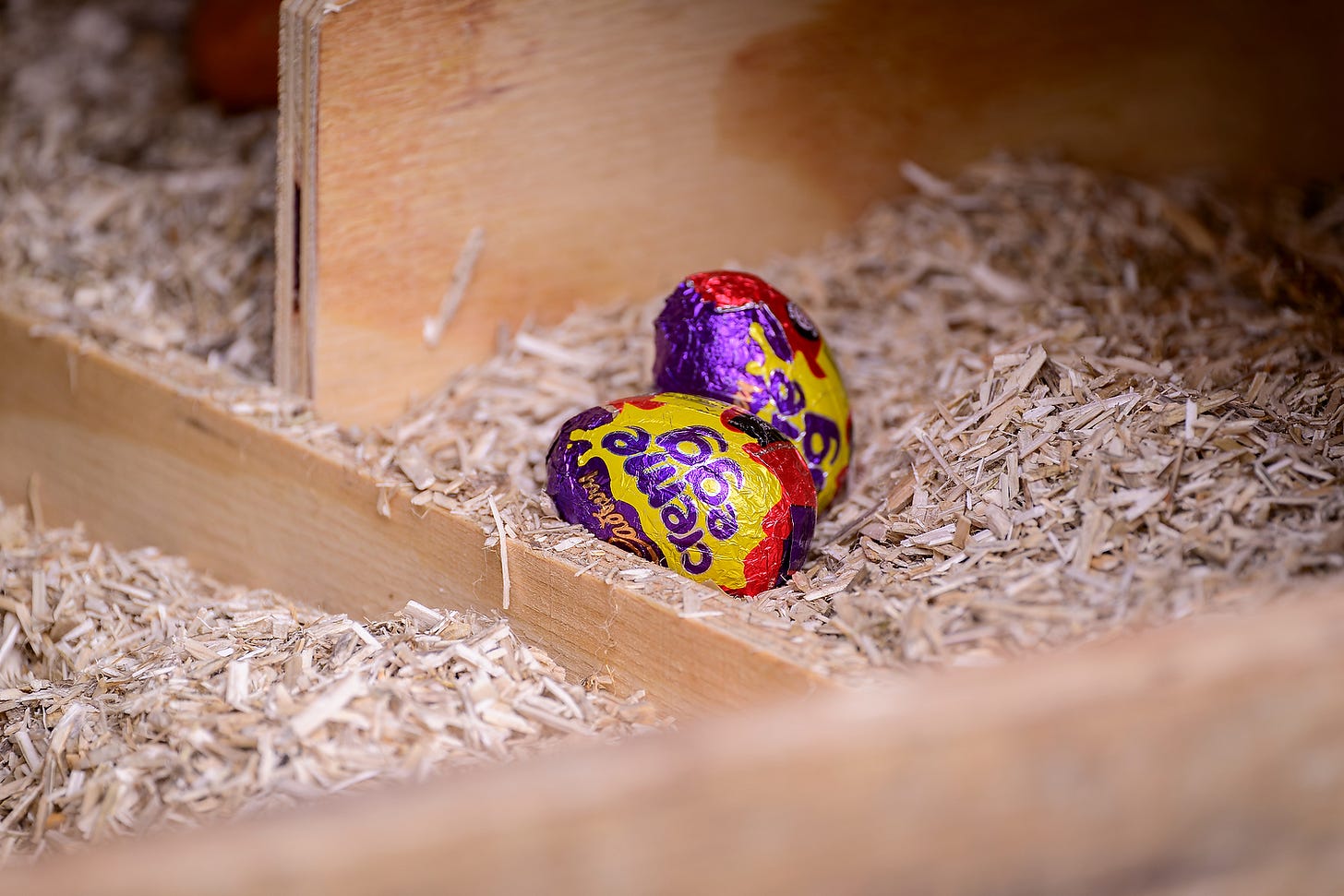
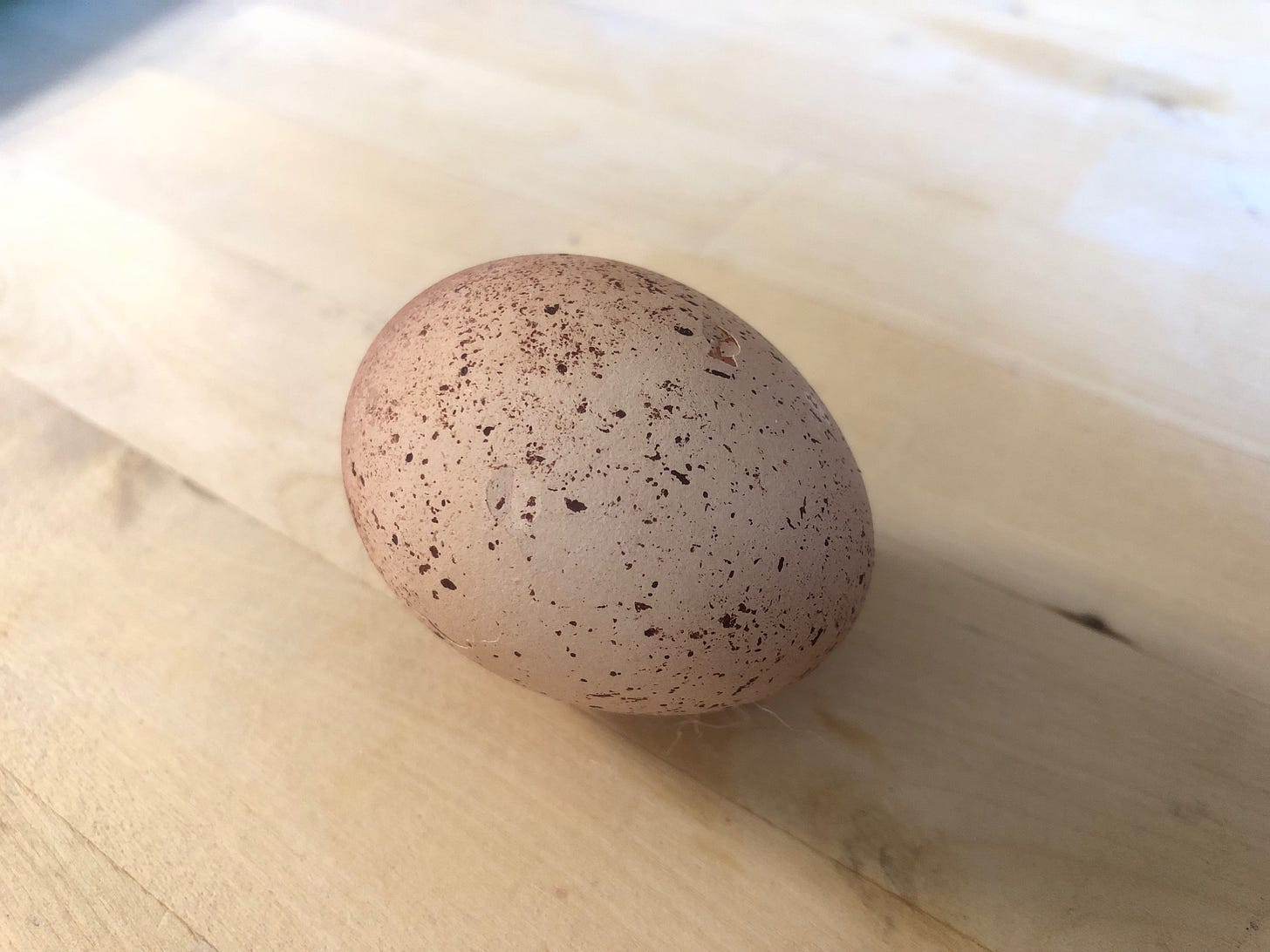
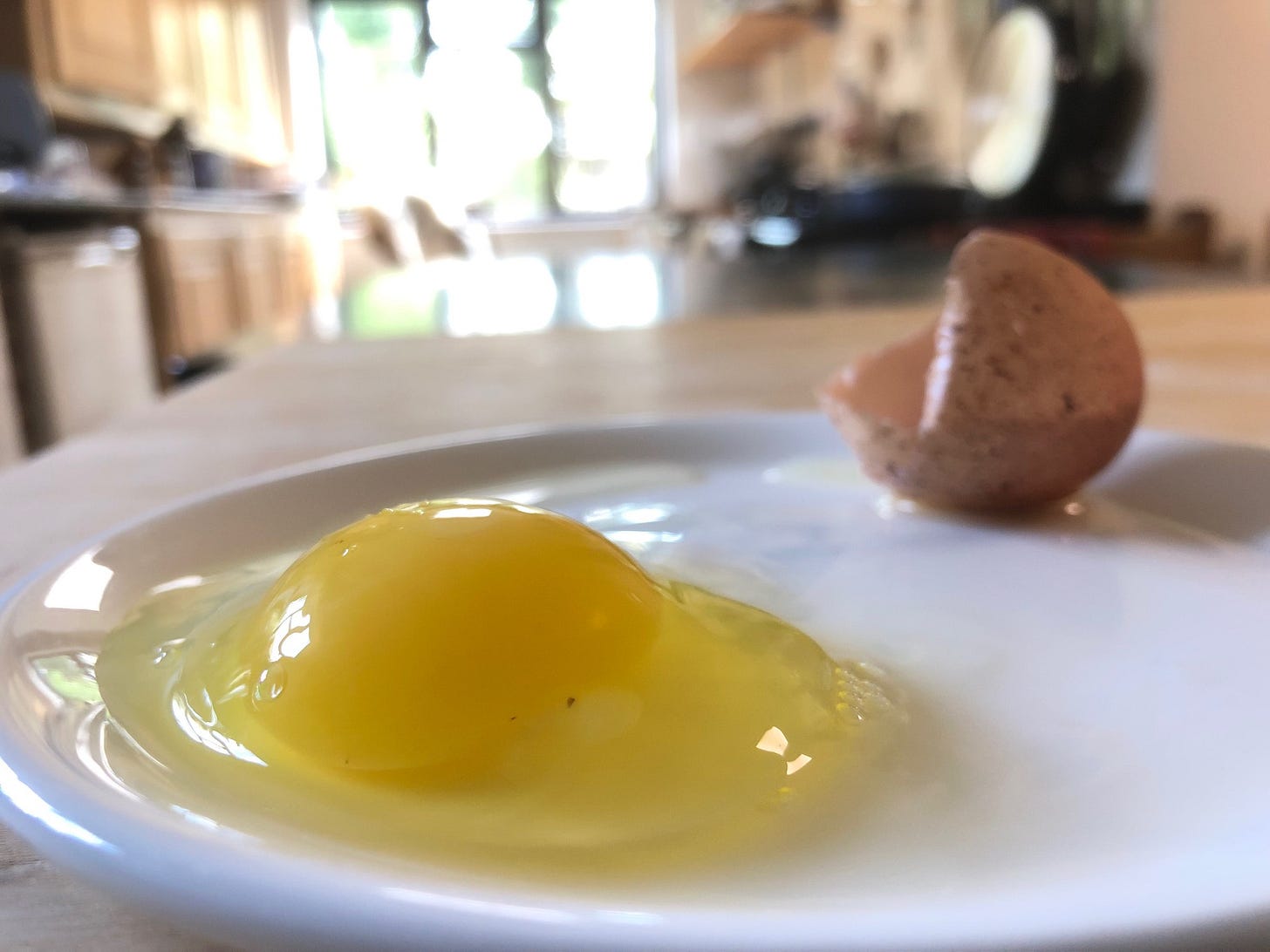
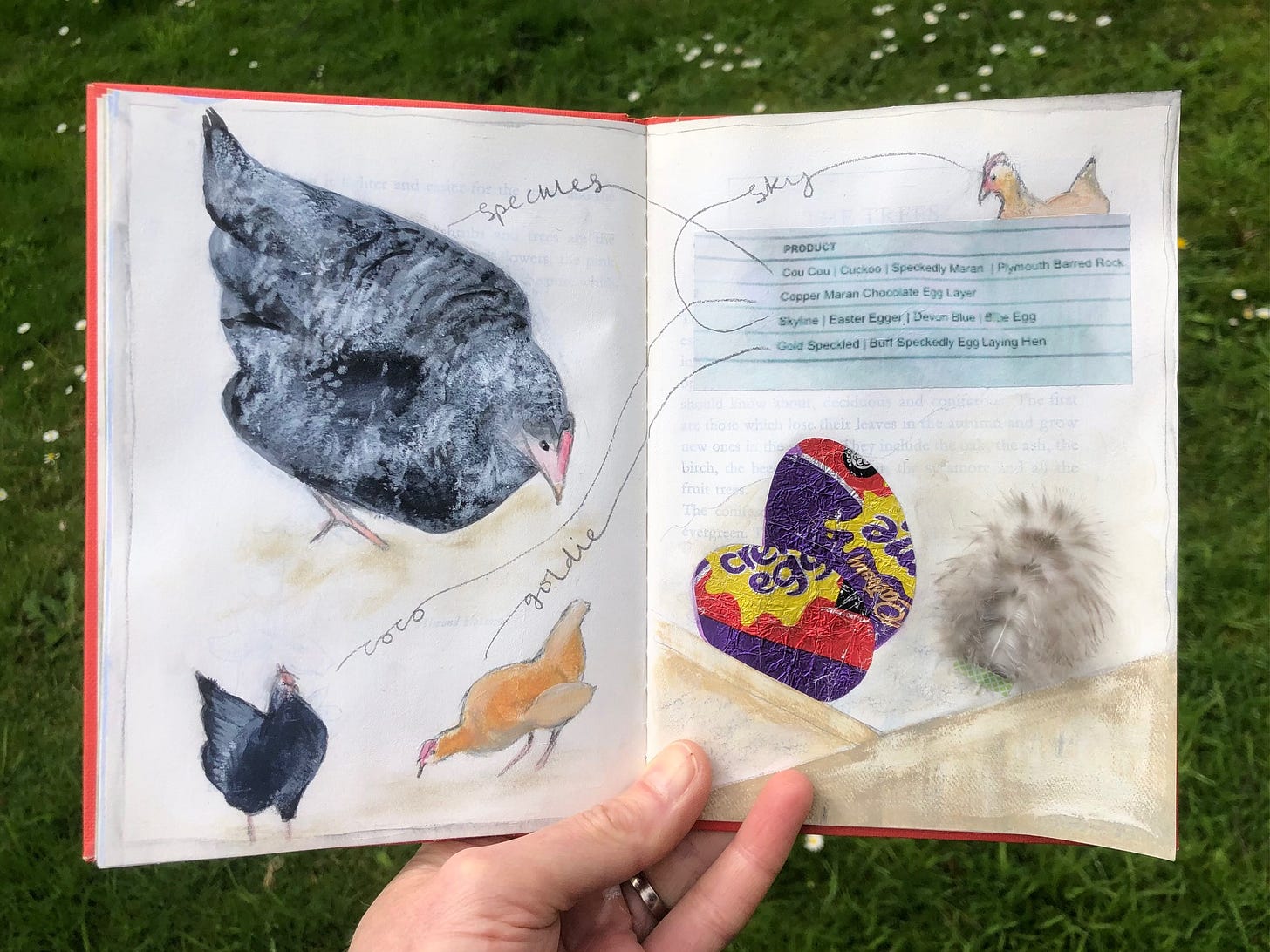
What a lovely and evocative post Rebecca! I am very jealous to read about your chicken friends growing up-I feel as if I really missed something, only having a small dog. I can imagine chickens would have been such engaging and properly sized companions for a young child. Your drawings capture their beauty perfectly! I remember the first time I had a just collected fresh egg for breakfast-pure heaven. I'm sitting at my desk overlooking our garden now calculating if it would be possible... Thanks for another wonderful Saturday read! Always something I look forward to 😄
A delightful post, lovely art, and so educational: I thought eggs came in boxes in the supermarket. Who knew? Loved the recording. They sounded very happy.😁